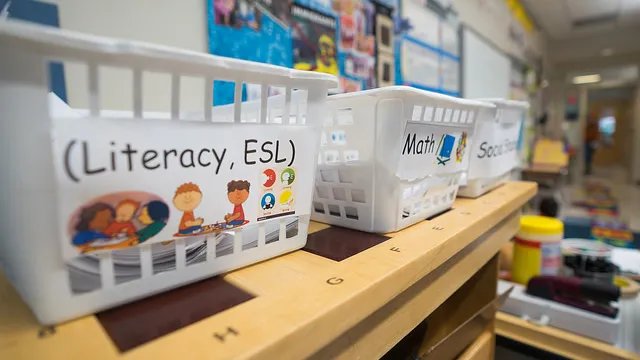ELL Educators & Classroom Teachers: Collaborating for Success


ELL Educators & Classroom Teachers: Collaborating for Success
At Ellevation, we are lucky to work with a broad range of educators who work day in and day out with our nation’s English Language Learners. We take very seriously our effort to develop tools that support the work they do with ELs, especially given the wide range of responsibilities educators have today. Across the country there are many new initiatives that require attention, including the implementation of Common Core State Standards, new assessments, new ELD standards, new teacher evaluation systems, and more. Too often these various initiatives are considered separate and distinct, leaving educators working on their own to navigate the changing landscape. In nearly every state where we work, we keep hearing that greater collaboration between EL educators and content teachers would prove beneficial to both groups. And, most importantly, to the English Learners they serve.
Along with author, consultant, and educator Diane Staehr Fenner, we recently delivered a webinar focused on how EL educators and content teachers could work together more closely. We were thrilled that over 130 districts participated in this webinar, reflecting the importance that our community places on this topic. We started by taking a look at the role(s) of EL educators today, and how that role could evolve so that EL educators are seen as experts, advocates and consultants in districts. By entering this role, we hope these ESL teachers will help ensure that the needs of ELs are considered from the very beginning as policies are discussed and adopted.
| Current | Preferred |
|---|---|
| Varying roles | Greater recognition of expertise and use of skills |
| Uneven role in district leadership | Greater input on instructional decisions with ELLs in mind |
| Language instruction in isolation | Deliberate, focused collaboration with content teachers |
With this in mind, we looked at a set of tools that Diane (@DStaehrFenner) developed to help districts take steps to position EL educators as experts and increase their role and input when making important decisions. Specifically, we looked at four tools:
- Equity Audit – Enables educators to look holistically at district programming choices to determine whether steps are being taken to meet the needs of ELLs
- Evaluation of CCSS Instructional Strategies for ELLs – Helps ensure that all teachers, including content teachers, understand the needs of ELLs
- Talking Points– Helps EL educators approach content teachers and communicate effectively
- Modeling – A step-by-step guide to how EL educators can model and discuss strategies
We all learn by doing. With each of the above strategies in mind, we walked through two very common scenarios that exist in schools and districts everywhere, and discussed which of these tools would be most useful. For example, when an EL Specialist needs to figure out how to collaborate with four different content teachers who do not focus enough on English Learners, we put the Equity Audit to use. The chart below shows the application of the Equity Audit to the case study:
| Consideration | Questions to Ask: To What Degree… | Rating |
|---|---|---|
| Communication | Do ELL educators and classroom teachers spend time communicating about the needs of ELLs? | 1 |
| Planning | Do ELL educators have input into how language instruction is delivered in classrooms with ELLs? | 1 |
| Instructional Materials | Are CCSS instructional materials/curricula appropriate for ELLs? | ? |
| Professional Development | Does PD prepare all teachers for shifts of the CCSS for ELLs? | ? |
We reviewed many examples in the webinar to test each of the different strategies to demonstrate how EL educators can improve collaboration with content teachers and increase a district’s focus on ELLs. The feedback from webinar registrants was extremely positive. More than one participant noted that the webinar was the best PD of the year, and many more communicated real appreciation for the community of EL educators that came together to learn and connect. We hope you enjoy the recording and the slides and we encourage you to use them in your district.